Configure DBPOWER / Sinocam Network Cameras for Cloud Recording, Remote Monitoring and Playback
Contents
Step 1: Connect camera to the network and find its IP address
Step 2. Access Camera's Web-based Configuration Tool
Step 3. Configure video profile
Step 5. Configure Events (Motion Detection and Snapshots)
5.1 Configure Motion Detection
5.2 Configure Image Snapshot Settings
We tested DBPOWER and Sinocam cameras. The configuration interfaces seem to be identical. We guess they probably use the same technology provider. So we include them in the same document. DBPOWER / Sinocam Network Cameras are compatible with CameraFTP cloud recording service. The cameras can upload image snapshots to our FTP server for both motion-triggered or continuous cloud recording. DBPOWER/Sinocam has indoor and outdoor cameras. Currently they support image/video resolutions of 1920x1080 and 1280x720. Motion detection is also supported. These cameras support CameraFTP VSS. With the help of CameraFTP VSS software running on a PC, it can upload video clips to the cloud.
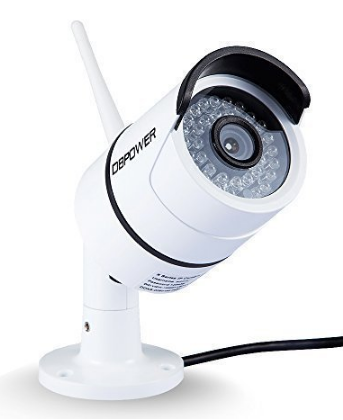 DBPower 1080P WiFi Outdoor |
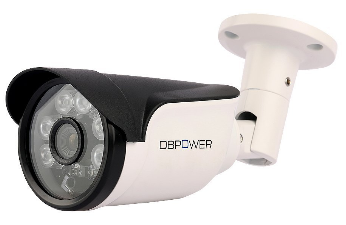 |
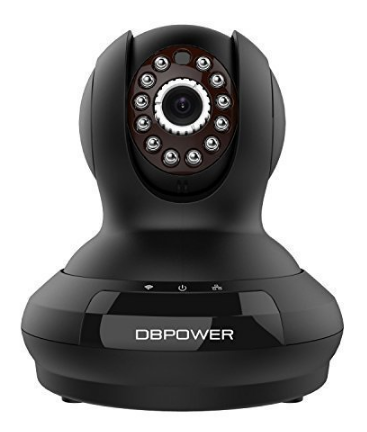 DBPower FI368 720p PTZ |
Basic camera information
| Video / image resolution | 1920x1080 and 1280x720 |
| Audio recording | Outdoor: No; Indoor: yes(?) |
| Image upload frequency | 1 image/1 to 86400s |
| Video frame rate | 1-30 |
| Night-vision | Outdoor models up to 100 feet |
| Image snapshot recording | Supported, supports 1 image/1 to 86400s |
| Video clip recording | Not Supported (Support with CameraFTP VSS) |
| Motion detection | Supported |
| Continuous recording | Yes |
| Supported video format | N/A (.mp4 with CameraFTP VSS) |
| Connection type | Ethernet cable and Wi-Fi |
| PoE (Power on Ethernet) | Some models |
| Indoor / outdoor | some models |
| Lowest pricing (as of 6/1/2016) | N/A |
Note: This document is not designed to replace the product manual from the manufacturer. The information provided is based on our knowledge of the model DBPOWER 720P outdoor bullet camera. It may not be accurate or completely up-to-date. Users shall contact the manufacturer for all camera-related issues and contact us only for CameraFTP-related (cloud service / FTP) issues.
The first two steps are camera related and are very trivial. If you have finished these basic steps, you can skip Steps 1 and 2.
Step 1: Connect the camera to the network and find its IP address
Follow the instructions to connect your camera. Then run the Setup / IP Search program from the manufacturer to find the camera's IP address.
If you cannot find the setup / IP search program, you can also install CameraFTP VSS to find the camera.
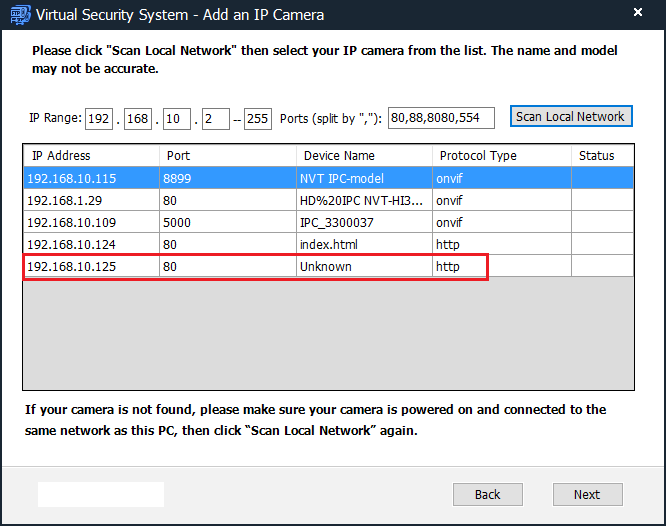
After you find the camera's IP address, you can launch Microsoft Internet Explorer (it does not work with other web browsers) to access the camera’s configuration site. See the screenshot below:
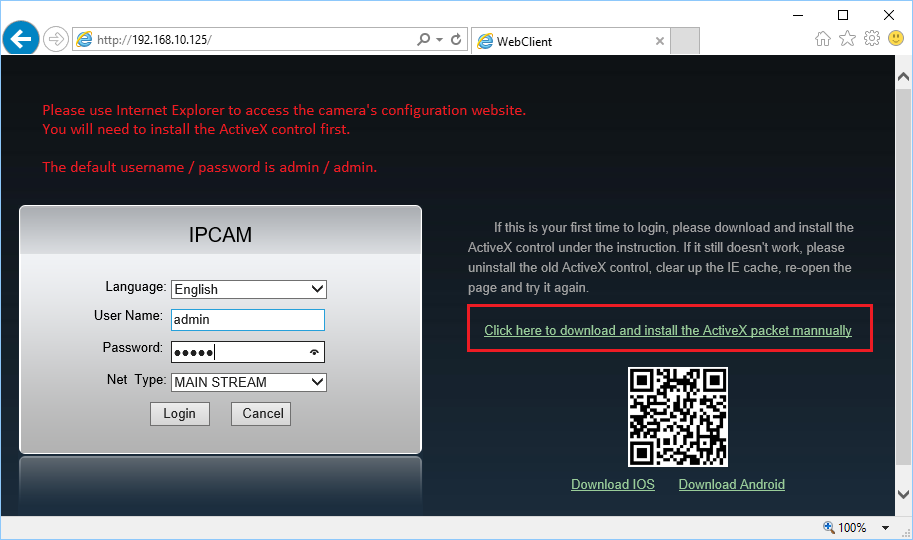
You must install the ActiveX/OCX control first; you might have to lower your browser security settings first. In our testing, it is better to manually install the ActiveX control.
Step 2. Access the Camera's Web-based Configuration Tool
Log on to the camera with the default username: admin, and the password is admin. It is recommended to change the password. After successful logon, it will go to the live-view screen:
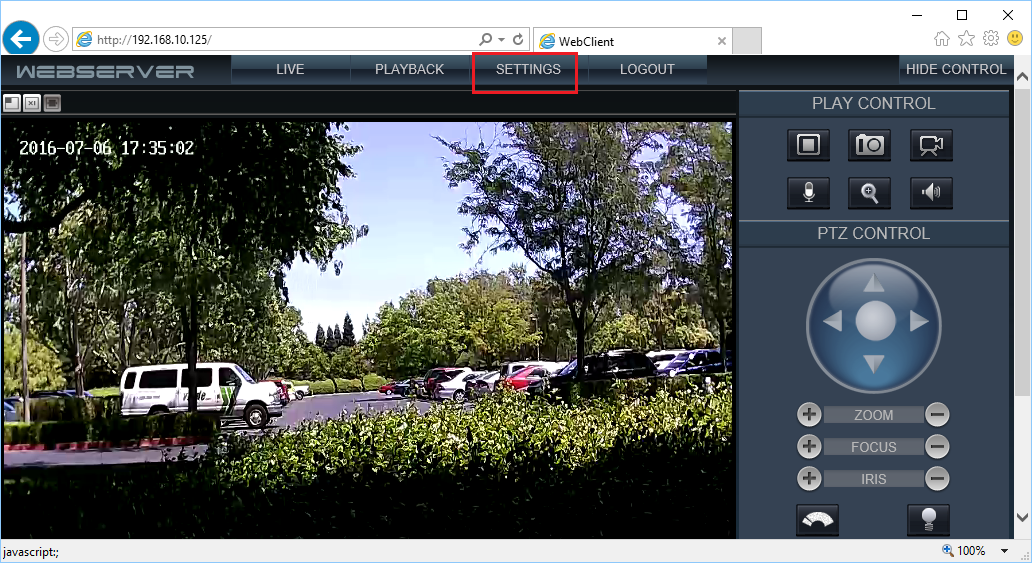
You can then click Settings to access the camera's configuration pages.
The CameraFTP service setup is only dependent on
a few parameters. You can quickly check the setup options to see if you need to configure anything. If you need to configure the network information, e.g. change it to use Wi-Fi, please see the screenshots below:
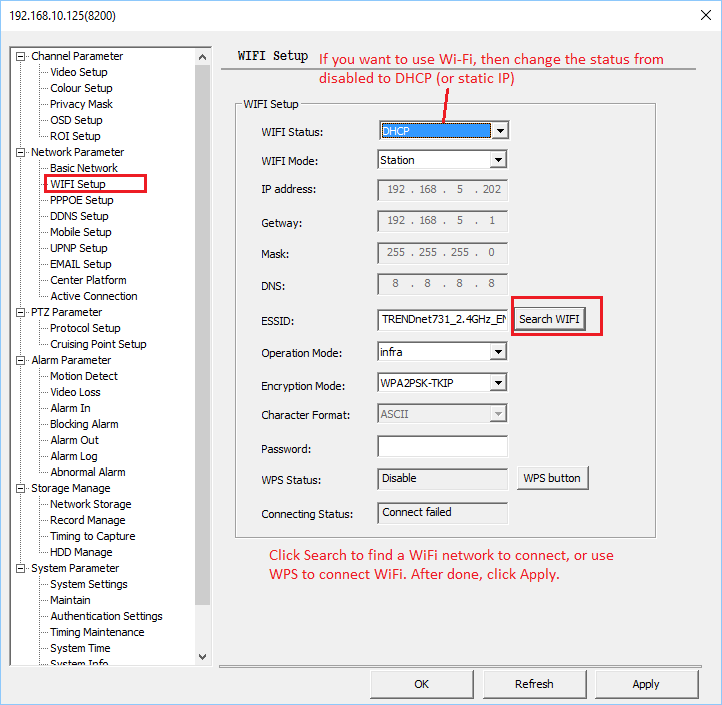
Step 3. Configure the video profile
Click Channel Parameter --> Video Setup, you can see the video profile screen as follows:
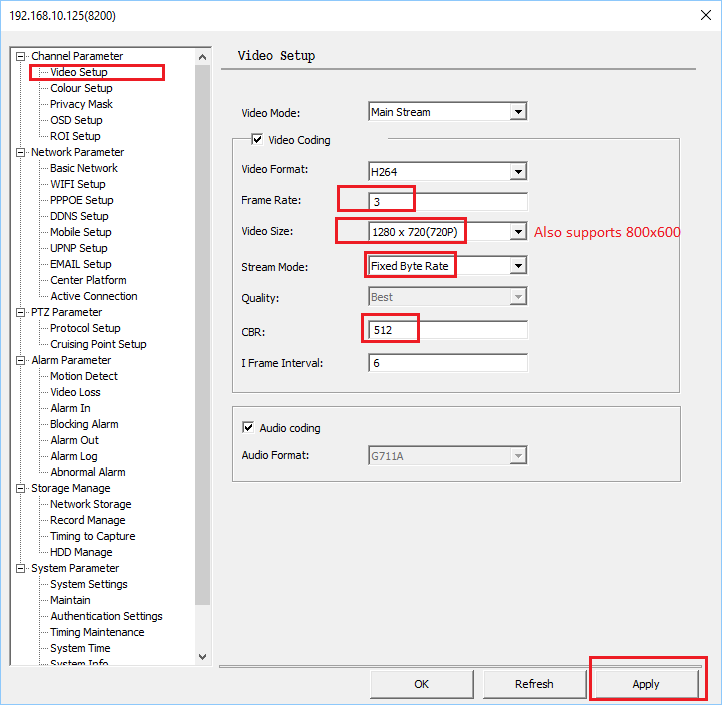
For this DBPOWER camera, if you want motion triggered image recording, then you only need to set the video size. The camera cannot upload video clips directly. It supports 720P and 800x600.
If you want to use VSS for video recording, then the parameters are dependent on your subscription level. Please note: The CBR (constant bit rate) must be changed. The default bit rate is designed for local network only. Setting it too high will slow down your network connection and causing upload to fail. Please also make sure your Internet connection has enough upload bandwidth. (ADSL type of connection is usually too slow, you might need to set the bit rate even lower.) Assuming you have enough upload bandwidth, you can set the maximum bit rate based on the bandwidth calculator. (Visit www.cameraftp.com, click on Pricing, and then customize a plan)

Step 4. Configure FTP Settings
Click Storage Manage --> Network Storage, you will see the screen:
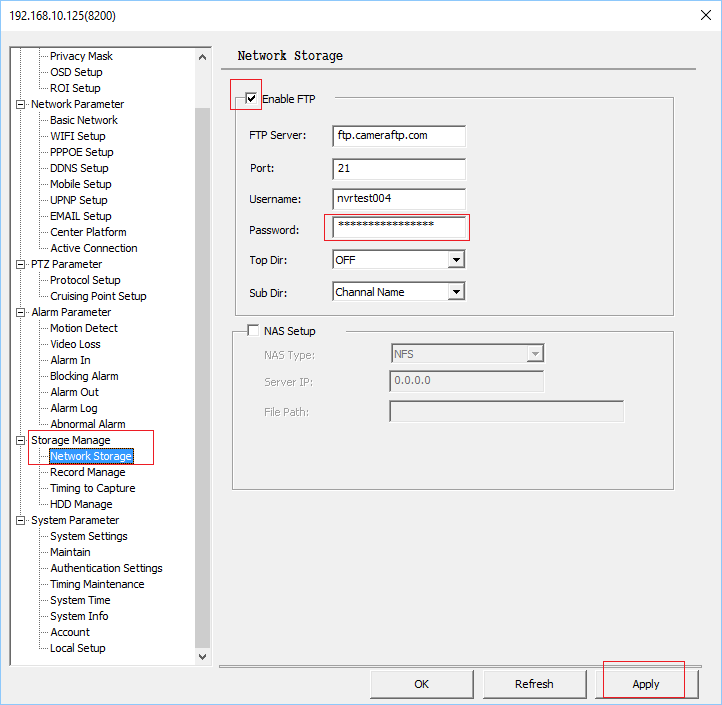
You need to set the following parameters:
- Enable FTP: Checked
- Server address: ftp.cameraftp.com or 66.220.9.45
- Port: 21
- Username and password: Your CameraFTP username; and the camera license key as the password. You need to add a camera from www.cameraftp.com website first.
- Dir Name: Your Camera Name
Step 5. Configure Alarm (Motion Detection and Snapshots)
5.1 Configure Motion Detection
If you ordered a plan with motion detection enabled, then you must configure motion detection with your camera. Click Alarm Parameter --> Motion Detect, you will see:
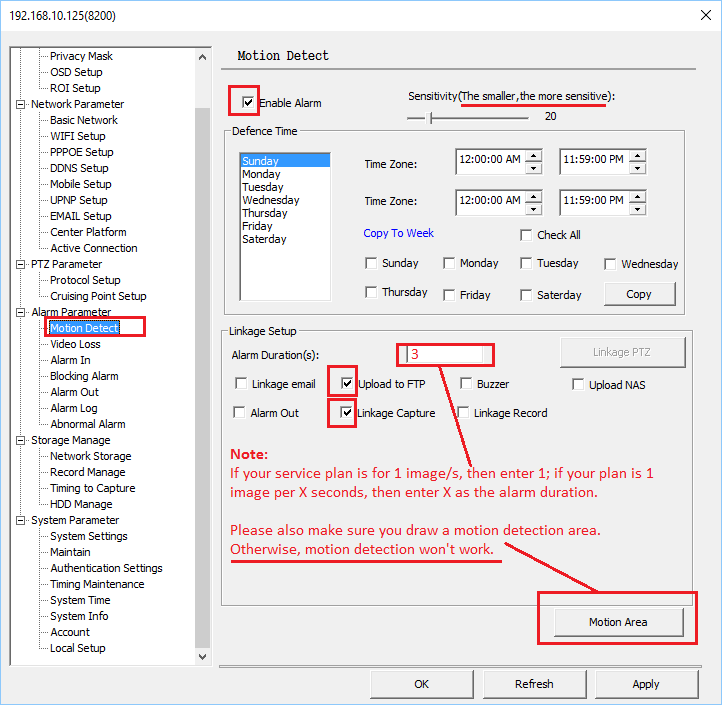
Check "Enable Alarm", set a motion sensitivity level; set the Defense Time (usually select all times); Check both "Upload to FTP" and "Linkage Capture". The "Alarm Duration" should be set based on your service plan. If you ordered a plan with 1 image per x seconds, then the duration should be set to 3.
It is very important to set the Motion Area. Click "Motion Area", and the draw a rectangle. The interface is a little confusing, so please make sure you have actually set a motion detection area. Otherwise, motion detection will not work.
Click Apply to save the settings.
5.2 Configure Continuous Image Snapshot Recording
This camera can only upload image snapshots and not video clips. It is ok as CameraFTP has viewer apps that can play the recorded image snapshots just like video clips. If you ordered a video plan, you need to: (1) order a new image plan and cancel the old video plan; or (2) Run CameraFTP VSS on a PC. Do not configure FTP in the camera. VSS can upload video clips to CameraFTP.
The snapshot image resolution is set in video profile settings. To enable continuous image recording, you need to:
- Check "Timing to capture".
- Picture quality: Normal
- Interval: should be set based on your subscription level. If you ordered a plan of 1 image per X seconds, then set it to X seconds.
- Check "FTP Storage".
Click Ok/Apply to save the settings.
6. CameraFTP Viewer
You are all done. For safety, you can reboot the camera to make sure it still works fine. If you need to make changes, you can run the setup program again to find the camera’s IP address (as it may change with DHCP), and then access the camera’s Configuration pages.
After your camera is setup, you canv visit www.cameraftp.com to monitor or play back your recorded footage from anywhere. You can also download CameraFTP Viewer App for iOS and Android.
Note: Currently DBPOWER / Sinocam cameras cannot upload video clips to FTP server directly. To upload video clips, you can use CameraFTP VSS on a PC. These cameras are compatible with VSS-based Live View, Cloud Recording and Local Recording.
If you use VSS for video recording, it is important to set the correct video frame rate and bit rate in Video Profile Settings.
Cannot get it to work? Please read our Trouble-shooting Guide.
